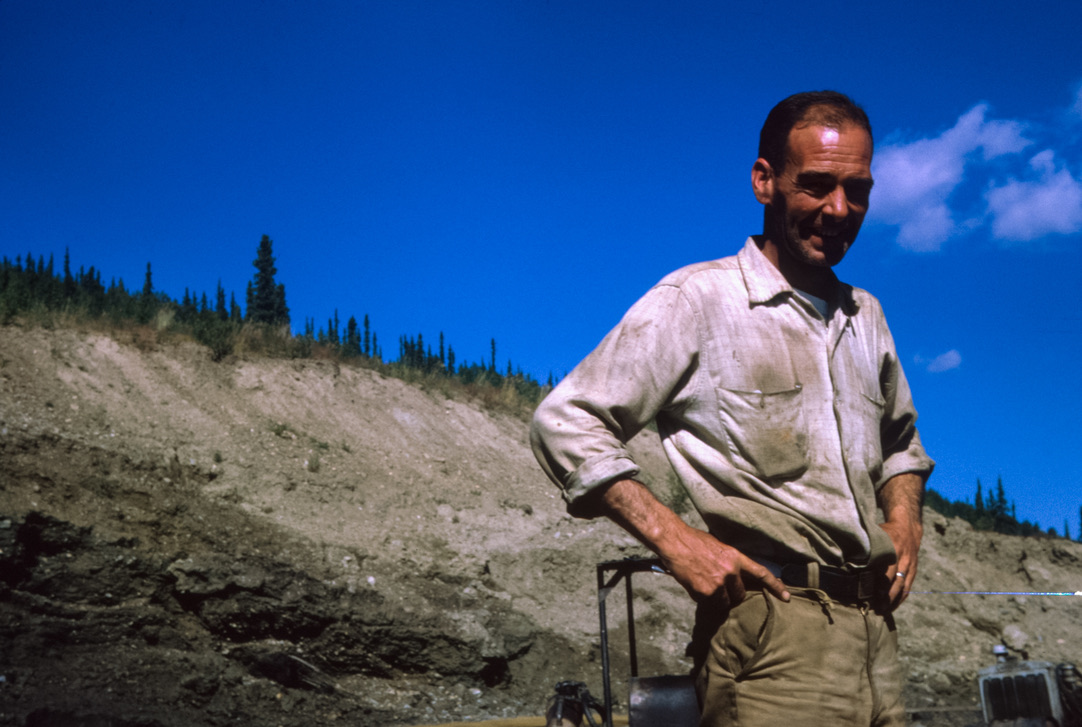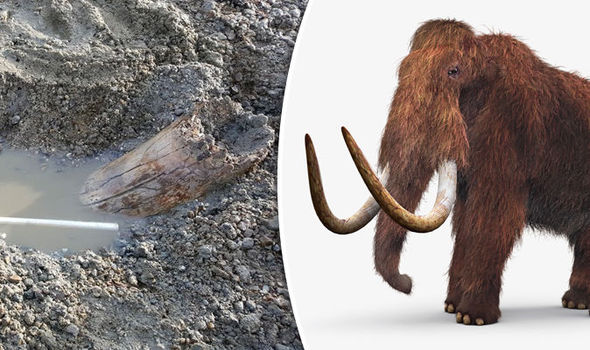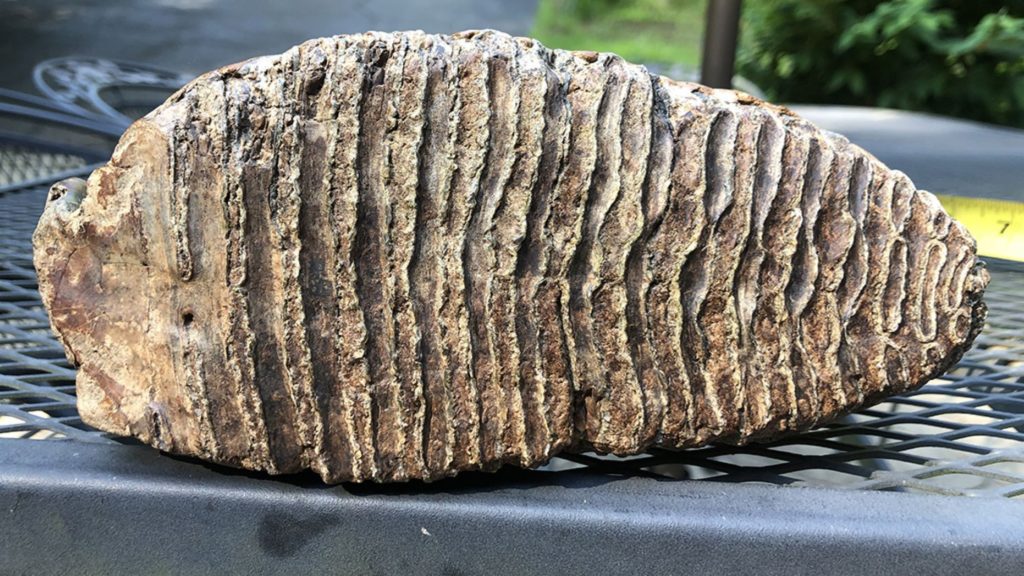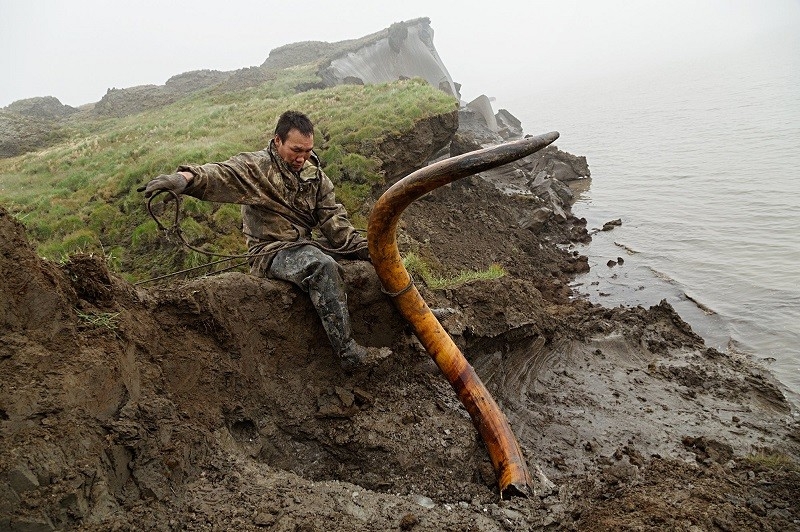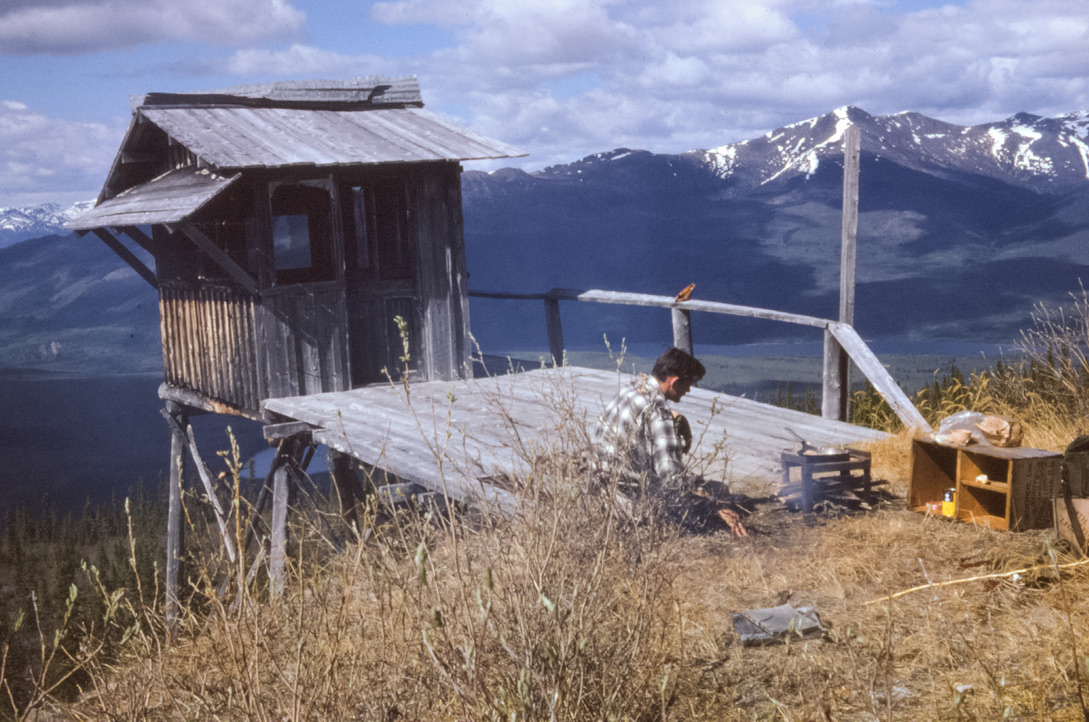EPISODE 220 YUKON DIARY STORY 6 THE BIG TOOTH
alan skeoch
Jan. 2021
This is Jack Acheson. Every summer he came to Dublin Gulch, YUKON, and found treasures of various kinds. He gave me one of his treasures…perhaps
because we both wore similar work clothes.
This is a hairy Mammoth, related to elephants distantly. Once upon a time 10,000 years ago they
wandered across the Yukon after crossing the Bering land bridge from Asia. Once here some of them
met North America’s Mastodons who look similar. Both of these creatures were common residents
of North America until killed by human predators. They had big teeth. Huge tusks. Jack finds
them every year in Dublin Gulch, at least he did in the 1960’s.
“How would you like this … a gift”, said Jack Acheson as he leaned against his Cat D6 in Dublin Gulch.
“What is it?”
And he handed me a rock about the size of large can of fruit salad…no, bigger than that.
“Take a guess”
“ A big chunk of galena…sort of shiny…raw silver and lead…heavy.”
“Wrong.”
“Certainly not gold.”
“Look at the layers…clue to what it is.”
“Hard…looks like a stone layer cake… sidewise…many layers.”
“Wrong again.”
“Where did you get it?”
“Found it right here in Dublin Gulch…found a bunch of them
and other weird stuff…more every year it seems.”
“I Give up. What is it”
“The tooth of a Hairy Mammoth…a molar tooth”
“It is incredible…huge tooth.”
“We find lots of Mammoth teeth…tusks,..bones…right here in Dublin Gulch.”
“I noticed those long curved things leaning against your cabin…”
“Those are the tusks.”
“What do you do with them?”
“Government people from Whitehorse come and get them.”
“How old are they?”
“10,000 to 12, 000 years old…ancient”
“There were mammoths here in the Yukon?”
“Lots of them I think…herds…whatever term is applied to a bunch of mammoths.”
“Complete skeletons?”
“No…we find piles of bones…sometimes single tusks…sometimes
just a tooth like this one I’m giving you.”
“How come the bones are all mixed up….spread around.”
“Water … flood … there once was a big glacial river here in the McQueen Valley.”
“Ice?”
“Yes, glacial ice swept down this valley as well…ripped the hills apart. You had
lunch up on Keno Hill I hear…you sat on the edge of a hanging valley
where the ice had ripped a great slab of rock…cleaved it.”
“Possible the carcasses of those Mammoths got ground up and the hard
parts like teeth and tusks were piled in the sediment.”
“And you are giving this tooth to me?”
“You are more interested than many.”
“Are you sure this is a Mammoth tooth and not a Mastodon tooth?”
“Absolutely. Teeth are the easiest way to tell the difference. This mammoth
is like a layer cake. A mastodon tooth on the other hand looks like our
teeth…solid with bumps for grinding. Both kinds of teeth were for grinding
but mastodons ground up bigger branches while the mammoths were more
ground feeders. The guys from Whitehorse told me that.”
“Thanks Jack…wonderful thing to have….”
“Mammoth would have to lose this tooth somehow. Mammoths only had two sets
fo teeth. Once they were worn down the mammoths starved to death.”
“Same could happen to us if there’re no dentists around.”
That is how I got a treasure from the Yukon. My very own Mammoth tooth.
Gave it a special place in my rucksack when the Yukon job was over. A year
later, in the fall of 1963, I was hired as a history teacher at Parkdale Collegiate
Institute, west end of Toronto. The tooth was a great teaching tool in that
first year of teaching. Not long. Sometime in the following year I went
to get my mammoth tooth and it was gone.
Some student stole my mammoth tooth! Or maybe it was one of my
fellow staff members. Or maybe one of the caretakers thought it
was garbage. Most likely a kid. I should have put the tooth in a
safe place.
Now here is a question for you to think about. WHAT WAS JACK ACHESON
DOING IN THE YUKON IN 1962? The answer may be
obvious for most of you. The next Episode 221 will provide an
interesting answer… even if you guessed correctly.
Bill Dunn and I did not see any mammoths when we cooked our lunch beside a cliff that hung over this valley. We did not even know
those huge creatures once wandered around here…did not know until i met Jack Acheson. And got my mammoth tooth. Not sure
who has that tooth now.
alan skeoch
January 2021
POST SCRIPT: MAMMOTHS AND MASTODONS
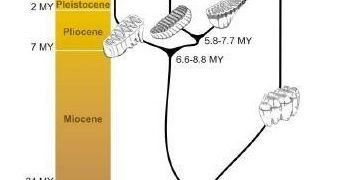
The analysis of a mastodon tooth explains further how climate changes in Africa provoked the divergence of humans, chimps and gorillas. Loxodonta=African elephant; Elephas=Asian elephant; Mammuthus=mammoth; Mammut=mastodon
Humans and elephants evolved in the same African dry savanna. That’s why elephant fossils offer a clue on the type of environment in which our ancestors lived. An analysis of DNA painstakingly retrieved from an ancient mastodon tooth has further pushed back the time when mammoths split off from elephants. It appears that the mammoths and Asian elephants split about 5.8 to 7.7 million years ago when humans and apes could have shared a common ancestor.
It appears that environmental changes at the time caused a massive period of speciation (species formation) in Africa. “Until recently, scientists believed that humans and chimps last shared a common ancestor about 5 million years ago. But fossil studies and genetic discoveries in recent years have pushed this date back by at least 1 million years.” said Paul Matheus at the University of Alaska in Fairbanks, US.
Now, Matheus team employs a mastodon tooth recovered in Alaska to revise the evolutionary history of mammoths and elephants, previously believed to have diverged from each other about 5 million years ago. Mastodons are elephant related animals, with elephant-like build, but with straighter tusks, longer body, longer head, shorter limbs and more primitive teeth. Fossil data showed that mastodons split from elephants about 24 million to 28 million years ago.
The Alaskan mastodon tooth was estimated to be 50,000 to 130,000 years old. The mastodon DNA was extracted from 30 grams of ground tooth. They sequenced the whole mitochondrial DNA of the mastodon, about 16,000 pairs of nucleotid pairs. They were compared with similar DNA sequences from African elephants, Asian elephants and mammoths (mammoths were just hairy species of elephants).
As the fossils showed mastodons split off from elephants about 26 million years ago, the researchers could calculate the rhythm of mutation accumulations in time, called the evolutionary clock.
